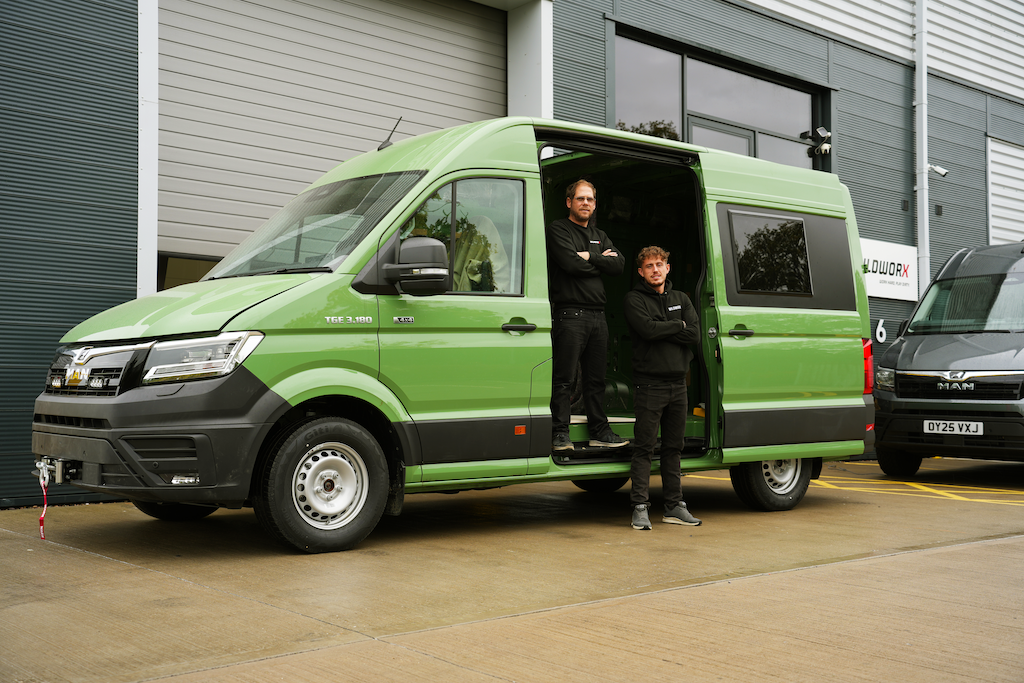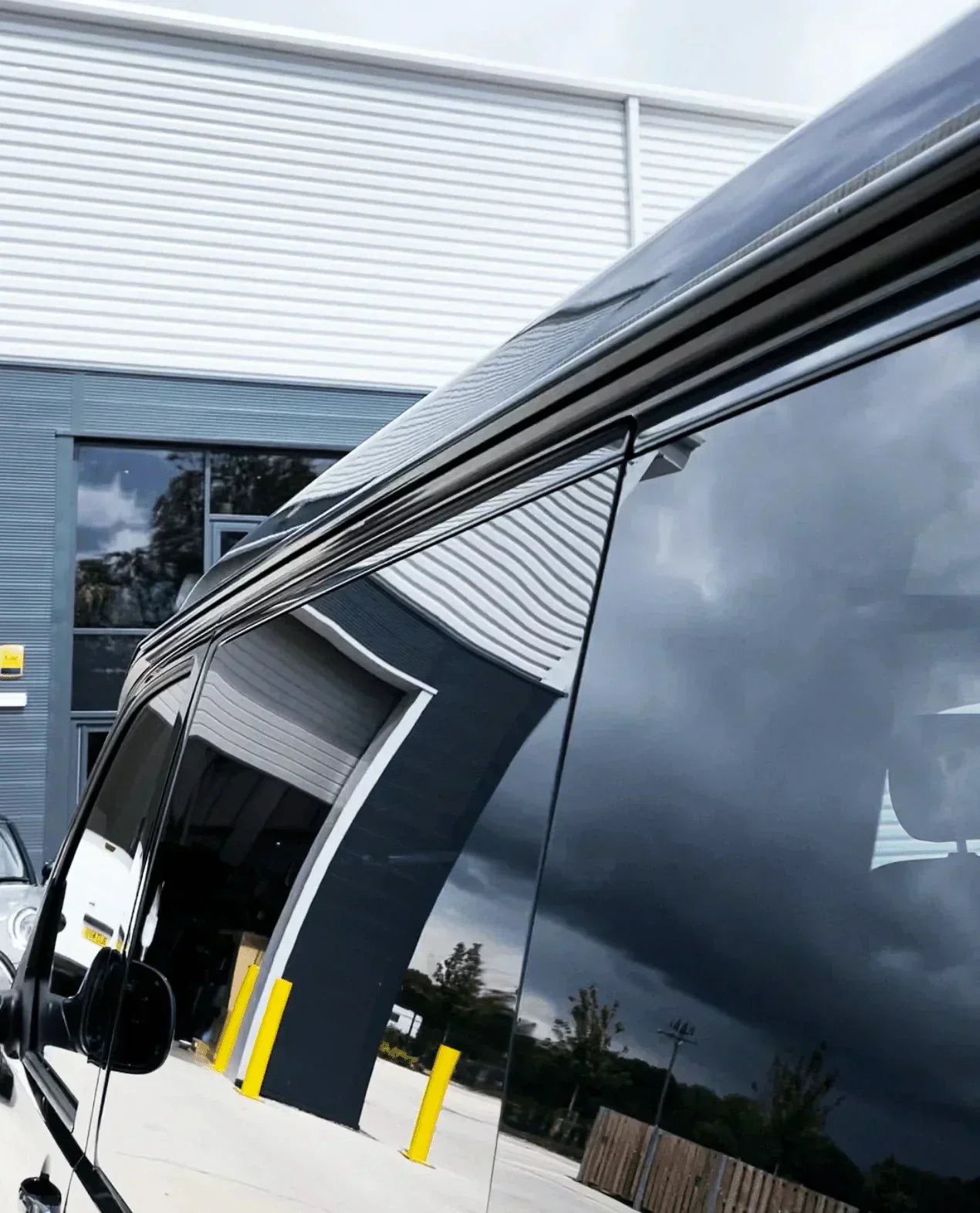Ever wondered how professional converters create reliable, off-grid campervans that can handle real adventure?
In this week’s Worx in Progress, our team worked on three very different vehicles. A MAN TGE, a Mercedes Sprinter, and a Ford Transit AWD — showing the key upgrades that transform a standard van into a capable, long-term home on wheels.
If you’re planning your own conversion or trying to decide which base vehicle is right for you, here’s what you can learn from these builds.
1. Start with the Foundation: Insulation, Carpeting and Wiring
A comfortable, quiet campervan starts from the inside out. Before you think about furniture or finishes, you need to get the structure right.
Professional converters spend days on:
-
Insulation: Multi-layer insulation keeps heat in during winter and out during summer.
-
Soundproofing: Acoustic deadening on panels reduces road noise dramatically.
-
Pre-wiring: Running 12 V and 230 V cables early makes later installation cleaner and safer.
Pro tip: Always draw up your full electrical plan before lining the van. Once your panels are on, adding extra circuits or lights can become a nightmare.
If you’re tackling a self-build, look for high-quality materials like closed-cell foam insulation, Dodo sound-deadening mats, and fire-retardant carpet lining. These are small investments that make a huge difference to comfort.

2. Why Suspension Upgrades Matter for Campervans
Most factory vans are designed for tradespeople, not off-grid travel. When you load them up with water tanks, cabinets, and camping gear, the ride quality and clearance can quickly suffer.
That’s why upgrading the suspension is one of the best investments for anyone planning an adventure van. In our workshop, the Ford Transit AWD received a Van Compass 2.0 suspension lift kit — complete with new coils, leaf springs, and adjustable rear shocks.
The result is better ground clearance, improved ride comfort, and far more confidence on rough tracks.
Why you might want a suspension lift:
-
Avoid bottoming out on uneven terrain
-
Improve stability in crosswinds or on motorways
-
Make space for all-terrain tyres
-
Increase approach and departure angles for off-road driving
For most medium vans, a 2-inch lift strikes the perfect balance between capability and handling.

3. Choosing the Right Base Van: MAN TGE vs Mercedes Sprinter
If you’re in the research phase of a conversion, these two vans come up time and again — and for good reason.
-
MAN TGE: Shares its chassis and dimensions with the VW Crafter, offering precise German engineering and great value for money.
-
Mercedes Sprinter 417 CDI: With a 4.1-tonne gross vehicle weight, the Sprinter can carry a heavier build — ideal if you plan on lithium batteries, large water tanks or multiple passengers.
The Sprinter’s extra 33 cm of rear overhang adds valuable interior space but slightly reduces off-road clearance. It also offers a stylish all-black cab option and excellent drivetrain reliability.
Meanwhile, the MAN’s boxier rear end makes layout design easier for furniture and bed flares — giving you a little more usable wall space.
4. Electrical Integration: Getting Modern Vans Right
As vans have become more advanced, electrical upgrades have become trickier. Many new vehicles no longer have a traditional switched live feed, meaning you can’t just splice into the headlights for auxiliary lighting.
That’s where CAN-bus integration comes in. In our builds, we use CAN-bus readers to connect grille lights, winches, and roof lights safely to the existing system. This avoids ECU errors and keeps your wiring warranty-safe.
If you’re adding LED lights or a winch, always check whether your van requires a CAN-bus reader or smart relay. Plug-and-play wiring isn’t always possible anymore.

5. Solar Power and Roof Systems
Fitting a solar panel is one of the most valuable upgrades for any off-grid camper. It allows you to recharge leisure batteries without relying on campsite hook-ups or long drives.
In this build, we fitted a rigid-frame solar panel directly onto a pop-top roof before installation — creating a neater and stronger fit.
Flexible panels are lighter and easier to install on curved roofs, but rigid panels are generally more efficient and last longer.
To size your system:
-
100 W = phone charging, LED lights
-
175–200 W = fridge, lights, devices
-
300 W+ = full off-grid setup with inverter and laptop use
Pair your panel with an MPPT solar controller and lithium or AGM leisure battery for the most reliable setup.
6. Interior Details that Make a Difference
A professional finish isn’t just about how a van looks — it’s about how easy it is to live with.
We design custom door cards and wall panels that can be removed for servicing, with built-in storage pockets to make use of every inch of space. Choosing materials that are lightweight, durable and easy to clean is key for longevity.
Look for:
-
Marine-grade plywood or lightweight composite panels
-
Hardwearing carpet lining
-
Flush-fit fixings and removable access panels
These are small details that make ownership simpler — and increase the resale value of your conversion.
Key Takeaways
Building a dependable, off-grid campervan isn’t just about fancy interiors. It’s about combining smart design with the right mechanical and electrical upgrades.
If you’re planning your own build, here are the essentials worth investing in early:
-
Quality insulation and lining
-
Properly mapped electrical wiring
-
Suspension upgrades for heavy loads
-
Reliable solar power system
-
Practical, removable interior panels
You can find many of the parts and systems we use in our own builds on our store — from solar kits to grille lights, roof racks, and off-road suspension components.
Watch the Episode
For a closer look at how these principles come together in real builds, watch Worx in Progress Episode 7 on our YouTube channel.
You’ll see the MAN TGE, Mercedes Sprinter, and Ford Transit AWD each take shape — three different paths to one goal: the perfect off-grid adventure van.





Leave a comment
This site is protected by hCaptcha and the hCaptcha Privacy Policy and Terms of Service apply.